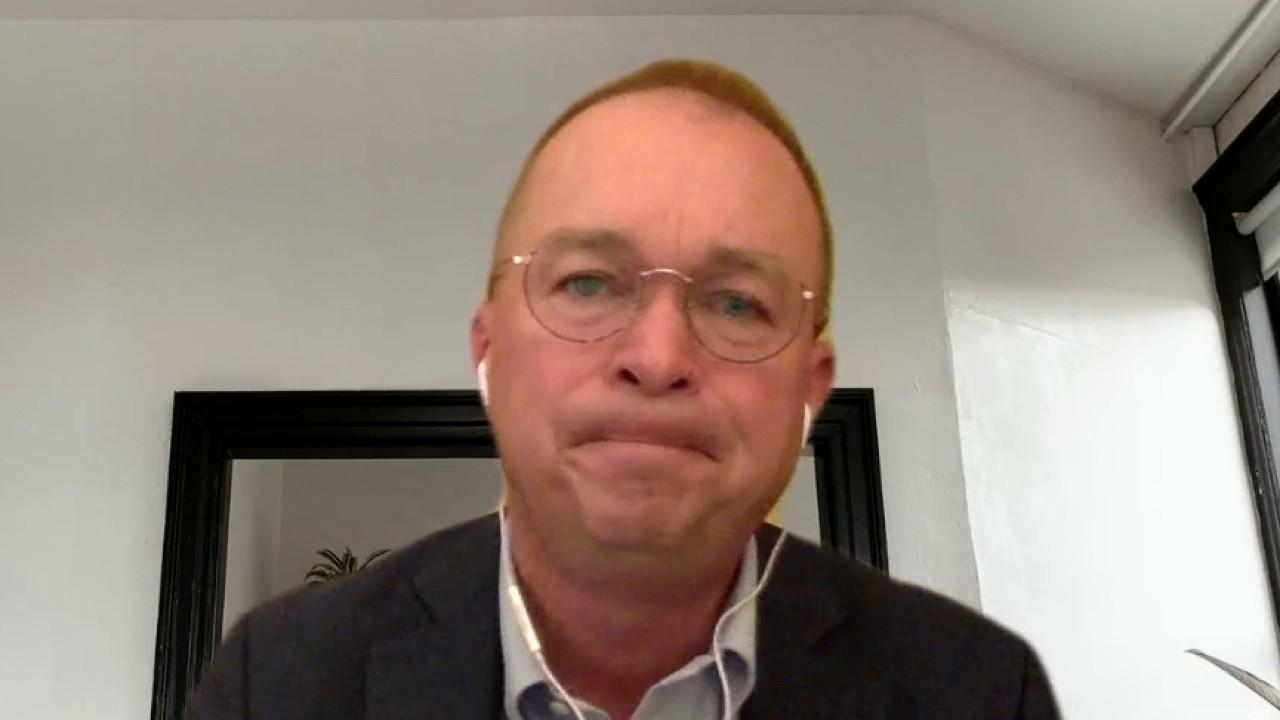Private sector can help lower health care costs, increase competition: RNC spokesperson
RNC national spokesperson Liz Harrington discusses the upcoming election, health care and the battle over the Supreme Court vacancy.
With the president’s big health care speech this week, I’ve been reflecting on what health care looked like before the 2016 election.
Continue Reading Below
We were only a few years into ObamaCare’s disastrous rollout. Premiums were rising, insurance providers on the exchange were dropping like flies, and health care was more complicated and expensive than ever for millions of people.
To add insult to injury, Americans everywhere were forced to choose between paying for expensive government-mandated insurance or paying a fine and going without insurance at all.
The biggest difference between then and now is who sits in the Oval Office.
TRUMP'S NEW HEALTH CARE INITIATIVE 'FAIRLY LIMITED': MULVANEY
Americans were tired of having a president who put bureaucrats and barriers between patients and doctors.
In January 2017, Americans who long felt like their voices weren’t being heard in Washington had a fresh start with a new president—one who ran on kitchen table issues and struck a different tone than his predecessor.

While there is still work to be done, Americans should be proud of what President Trump was able to accomplish during his first four years in office addressing the concerns that keep families up at night.
Since President Trump was sworn in, we’ve made significant progress as a country towards lowering health care costs, increasing choice, and improving patient outcomes.
We removed the fine from the ObamaCare individual mandate that punished people for not being able to afford health care. And we repealed the medical device tax, an excise tax, because life-saving equipment is not a vice.
MEDICARE MAY NOT COVER CORONAVIRUS VACCINE COSTS: REPORT
We’ve made it easier for Americans to access association health plans and short-term plans to ease the burden when traditional insurance options aren’t the best fit.
Historic steps have been taken to combat the opioid epidemic and terminal patients now have the right to try experimental treatments that could save their lives.
We have also made great strides towards strengthening and protecting our safety net so it’s available to those who need it most.
Now, we have a new fight: combatting the high price of care.
Towards the end of 2019, President Trump’s administration released new rules making it a requirement for hospitals to disclose the costs of procedures and treatments to patients before they receive them.
It should concern any customer when prices are a secret. In no other industry would this be tolerated—can you imagine buying a car or a house, and then waiting a few weeks to find out how much it cost you? Real-time health care pricing is not a big ask and we cannot tolerate unexpected medical billing any longer.
Sadly, there are those who believe that patients do not come before profits.
Health care executives and special interests have put up roadblocks preventing the price transparency rules from going into effect. Ironically and unfortunately, the biggest roadblocks—and court cases—have come from people in health care who profess to have the patient at heart.
One of these rules was upheld by the courts in June, and it became more important than ever for price transparency be codified in law.
So, the fight moves to the Senate with the Health Care PRICE Transparency Act. If signed into law, it would require insurers and hospitals to disclose the secret negotiated rates of a service or procedure to patients ahead of time and require them to publish their discounted cash prices. This will allow patients and their doctors to pick the best care option that the patient can afford.
GET FOX BUSINESS ON THE GO BY CLICKING HERE
But the issue is bigger than receiving an itemized receipt. True price transparency means patients can compare costs of care between doctors and facilities, which leads to the most important part: access.
Transparency drives down costs, which in turn gives vulnerable or sick individuals easier and more affordable access to care they may otherwise be too afraid to seek out due to fear of the cost.
This encompasses everything from preventative and well-child visits to labor and delivery for pregnant women.
This change could also help rural hospitals keep their doors open as they offer high-value care and improve the quality of life for chronic illness sufferers who constantly worry what that next medical bill is going to look like.
With all these advantages, it’s no wonder price transparency is a popular idea.
According to polling done by the Foundation for Government Accountability, 87 percent of voters across the political spectrum support knowing the cost of non-emergency health services at least 72 hours in advance.
If we can get this bill across the finish line, it will be a game-changer for patients and families across the country.
When money is tight, being able to plan ahead and potentially shop around for affordable, high-quality care can make a world of difference.
No one should have to wonder whether or not they can afford the bill for preventative medical care—care that could potentially save lives.
It’s been said that when it comes to regulations, sunlight is the best disinfectant. With the Health Care PRICE Transparency Act, we can shine a light on hidden prices and help families make the best decisions for themselves and their own care.
Tarren Bragdon is the chief executive officer at the Foundation for Government Accountability.
CLICK HERE TO READ MORE ON FOX BUSINESS
Source: Read Full Article
